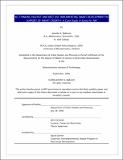| dc.contributor.advisor | John Kennedy. | en_US |
| dc.contributor.author | Balkcom, Jennifer K | en_US |
| dc.contributor.other | Massachusetts Institute of Technology. Dept. of Urban Studies and Planning. | en_US |
| dc.coverage.spatial | n-us-nm | en_US |
| dc.date.accessioned | 2007-06-27T20:26:11Z | |
| dc.date.available | 2007-06-27T20:26:11Z | |
| dc.date.copyright | 2006 | en_US |
| dc.date.issued | 2006 | en_US |
| dc.identifier.uri | http://dspace.mit.edu/handle/1721.1/37433 | en_US |
| dc.identifier.uri | http://hdl.handle.net/1721.1/37433 | |
| dc.description | Thesis (S.M.)--Massachusetts Institute of Technology, Dept. of Urban Studies and Planning, 2006. | en_US |
| dc.description | This electronic version was submitted by the student author. The certified thesis is available in the Institute Archives and Special Collections. | en_US |
| dc.description | Includes bibliographical references. | en_US |
| dc.description.abstract | This paper answers the questions "where to develop?", "for whom to develop?", and "what to develop?" from a double bottom line perspective of profit making and social benefit, using a 3-acre property in Santa Fe, NM as an example. The first section on where to develop gives a literature review of the costs and benefits of urban growth and generates the types of questions to ask when determining appropriate development location from a smart growth, double bottom line perspective. Using this framework it is determined that four of the top priorities for development in Santa Fe are affordable/moderate income housing, water conservation, greenhouse gas reduction, and compact/infill development. Section two considers who the best target market is for development, using demographic data and GIS maps from the 2000 Census, as well as statistics from local Santa Fe government and think tank sources, and finds that housing for the population between 100-120% of area median income is a significant unmet need. | en_US |
| dc.description.abstract | (cont.) Section three begins to determine what to develop for this population, while addressing the remaining policy priorities for the city of water conservation, compact development, and greenhouse gas reduction, and presents a preliminary cost analysis for a passive solar green built house. Preliminary results reveal that the green cost premium is an additional $6,743 over the cost of a traditional house, but this does not include the associated reduction in utility bills resulting from a passive solar design. A preliminary analysis of the costs and benefits of installing a photovoltaic system is included as well, and a feasibility analysis suggests that building a passive solar adobe house with photovoltaic system is feasible if a variance is granted to put at least 3 houses on the 3-acre subject property, which is currently zoned for one house. The conclusion makes suggestions for program evaluation measures, to evaluate success at not only profit making, but the double bottom line of achieving social returns as well. | en_US |
| dc.description.statementofresponsibility | by Jennifer K. Balkcom. | en_US |
| dc.format.extent | 116 leaves | en_US |
| dc.language.iso | eng | en_US |
| dc.publisher | Massachusetts Institute of Technology | en_US |
| dc.rights | M.I.T. theses are protected by copyright. They may be viewed from this source for any purpose, but reproduction or distribution in any format is prohibited without written permission. See provided URL for inquiries about permission. | en_US |
| dc.rights.uri | http://dspace.mit.edu/handle/1721.1/37433 | en_US |
| dc.rights.uri | http://dspace.mit.edu/handle/1721.1/7582 | |
| dc.subject | Urban Studies and Planning. | en_US |
| dc.title | Re-thinking highest and best use : implementing smart development in support of smart growth : a case study in Santa Fe, NM | en_US |
| dc.type | Thesis | en_US |
| dc.description.degree | S.M. | en_US |
| dc.contributor.department | Massachusetts Institute of Technology. Department of Urban Studies and Planning | |
| dc.identifier.oclc | 123287486 | en_US |
